|
|
| 'Like' us on Facebook | Follow us: |
Posted on: Sept 03, 2015
 |
Radiating Sai Glow in Lands Afar
Maya Dewaide is an alumna of the Sri Sathya Sai Higher Secondary School, as well as the Sai University.
She studied grades 10, 11 and 12 at the Sri Sathya Sai Higher Secondary School in Prasanthi Nilayam, graduating in 1998 with a national prize for business studies. She then went on to complete her Bachelor’s degree in Economics, Philosophy and English Literature from the Anantapur Campus of Sai University. She was named Institute Captain for the Anantapur Campus in the year 2001.
Maya presently lives in Antwerp, Belgium where she is engaged in the diamond and jewellery trade as Operations Manager of a leading enterprise. In this role, she oversees the logistics and insurance aspects of the business. Work apart, she helps coordinate the Sai centre set up by her father according to Bhagawan's instructions.
Maya Dewaide (MD) is the daughter of Mr. Jean-Pierre Dewaide, a teacher in the Sri Sathya Sai Higher Secondary School.
Reproduced below are excerpts from her conversation with Radio Sai's Karuna Munshi (KM) as part of the Fleeting Moments Lasting Memories series, recorded on January 23, 2015.
Spiritual Foundations
KM: Sairam Maya and welcome to Radio Sai! How did you come to Baba?
MD: Sairam. My father has always been a spiritual realist with his feet firmly planted on the ground. He would read the Mahabharata even when working on a ship. He has also been a yoga practitioner for years, even before I was born. Swami came into our lives in the 1970's and from then onwards into the lives of all our friends and family and anyone who came into contact with us.
KM: Your father is Belgian with an Indian name – Mr. J. P. Ramananda?
MD: His name is Jean-Pierre. Ramananda was given to him as a spiritual name. It was sometime in the 1970s when he read Swami's book written by Mr. John Hislop and instantly felt an immense surge of love. After reading the book, he was drawn towards Kriya yoga and got initiated into the stream. Since then, many people would feel attracted to Papa and seek him to discuss their thoughts about life. It was like a bunch of people – all converging with an earnest wish to move towards God. This thought and experience was actually written down in a letter form and sent to the Kriya Yoga Association in the United States. Once the letter was posted, Dad felt something imminent would happen. And a week later, we were singing bhajans. It was like Swami took over immediately when that earnest wish was expressed. Ever since Swami has been an integral part of our lives.
This was sometime in the mid-'80s when I was around six years old.
Face to Face with the Master
KM: Do you recall your first meeting with Swami?
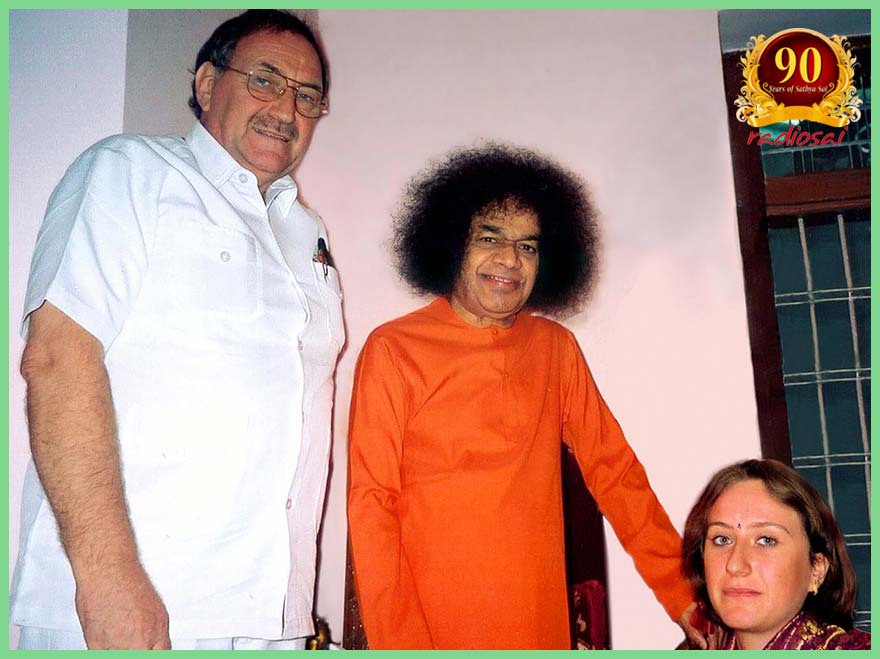 |
MD: My first journey towards Swami was in 1986-87 when my father had the inner calling to visit Puttaparthi. Unfortunately, we lacked the finances to make the trip as we had just purchased a home that was being used in the service of spirituality. My dad then told Swami that he wished to visit Parthi and come to Him, but had no money.
Interestingly, a few days later, my father received a call from an insurance company. We were told that a representative would be visiting us on a particular day. When the person entered the house that day, he sat at the corner of a table, asked my dad to sign a document and left.
He would have just taken one flight of stairs and in all curiosity as it all seemed so arbitrary that we peered down from the first floor to see where the person was. He had completely disappeared by then. We then tried to follow him on the street but saw no sign of him. When we came back home, we realised that the document was the settlement of an old insurance claim for an accident that had taken place some 30 years ago!
The insurance company had noticed that they were yet to return an amount. It was most shocking as we had never heard of an insurance company that looks back at records that date back to 30 years and then settle the outstanding claims. Regardless, we were happy that we had received the amount – just enough for my dad to buy tickets for the Parthi trip.
So, that visit to Parthi gave me the first physical introduction to Swami. What vividly stands out in my mind about that trip was a group interview that we had with Swami. During the interview, we said, “Swami, group?” and He replied, “No, centre”. This happened some three times. During the same interview, Swami created a Lingam although back then we were unfamiliar with the pooja and rituals associated with the worship of a Lingam. Realising our predicament, Swami said, “Just pour some water and give to anyone who wishes to be healed.” That was how the Lingam came to the Sai Centre.
Expressing Love through Seva
KM: Tell us about the Sai Centre.
I understand you meet every single day, seven days a week.
MD: There is no better way to express our love for Him than through seva. It helps you see God in the other person and remain constantly busy – unmindful of your own troubles. The Sai Centre is very active. We conduct Bal Vikas classes at the centre. We also visit old age homes, and accompany the inmates to the market or zoo. We translate interesting literature as well, particularly from the Sanskrit language. Almost every devotee comes together every day in the evenings. We discuss the thought for the day that is posted on the Radio Sai website. Each one of us share an interpretation from our individual perspective and experience. It’s interesting how the thought for the day holds a different meaning for all – whether a housewife, teacher or an IT professional. We also discuss some good experiences that anyone might have and exchange practical insights into topics of mutual interest, say health or education. So, it’s sort of a satsang. We always start with Hanuman Chalisa or Ganesh Veda or Medha Suktam and then go on to discuss the thought for the day.
 |
KM: So are they all Belgians? Not Indians living in Belgium?
MD: Most of them are white.
KM: And all of them know the Vedam and the Hanuman Chalisa?
MD: Yes.
KM: That is admirable. So your social life after work hours is all spiritual!
MD: Yes. That is our great good fortune too, because it is important to keep the balance. When we are working throughout the day and then have the satsang, it is really valuable as we get to hear of how fellow devotees practiced Swami’s message that day. It gives us a sense of home and the conversations serve as some sort of spiritual food that we get to consume in order to remaining inspired.
Transformation into a Sai Student
KM: It is nice to know that everything you have picked up here as a student is playing out so well in your life and you are able to stay on your path. But if I may rewind here Maya, how did you become a Sai student in the first place? You joined here in grade 10?
MD: Yes.
KM: So you were already a teenager and you had been to high school in Belgium. Quite a transition it must have been!
MD: Yes, it was! Again I must bring in my father here. He saw that morals were on the decline in western education and wanted me to receive sound education as a starting point for life. That was why in 1992, he causally asked me if I would like to go to Swami's school. I was a bit overwhelmed and replied that I didn’t wish to leave my friends in Belgium. I was not really open to the idea back then.
That same year in August, I visited Puttaparthi for the first time with my parents. I really enjoyed the different atmosphere here; it seemed like a new world was opening up to me. However, I was yet to be convinced that I could school here and on the flight back home, I was very sure that I couldn’t possibly attend Swami’s school. But when we returned to Belgium and I started my academic session there, I could see and sense the difference in ambience.
KM: Did you experience an internal shift from what you saw around you?
MD: I saw the lack of respect being given to the teachers - the instruments of knowledge. I also realised a difference in the attitude of teachers towards students. It was as if a filter was being removed from my eyes and everything was becoming clear to me. Then slowly the feeling of ‘I wish I could go to Swami's school’ took seed and started to grow. It was really an internalisation process because in the beginning it was my head that wanted to go and it took a while for my heart to be ready and open up fully to the idea.
On one of the journeys that my father made to Whitefield, he asked Swami about the school. “Yes, yes, sit down” He said this to my father even though he was sitting down. After that darshan, my father called me and said, “Maya, this is what happened. What about the school?” I said, “I am fine, I am happy here, I am happy everywhere.” It was like a bit of an evasive answer. My dad then understood why Swami said, “Wait, sit down”. However, the urge to join Swami’s school became strong in 1995. I couldn’t wait to imbibe Swami's spirit along with the other students and learn to work with it for the rest of my life.
KM: So you were personally ready by then and didn’t need further prodding. And this is so important. Some parents threaten their children saying, “If you do not behave, if you do not listen to me, I will send you to Baba's school.” It is not a prison that you punish your child in. It is only when the children are ready and see its worth that they will embrace this system and find what it has to offer, which no other place in the whole universe can. Any amount of money cannot give you what the Sathya Sai education offers.
MD: Exactly. Also, there were all the practical things that had to be taken care of first. Swami is very particular that the passport, visa and all other documentation are in order – all time consuming processes. In three or four interviews, Swami said, “Yes, it is ok to join” but later He directly told Munni aunty - “It is ok for her to join”. Then it all worked out so fast that things seemed to fall into place overnight. Suddenly all the gates were open and it was an overwhelming experience.
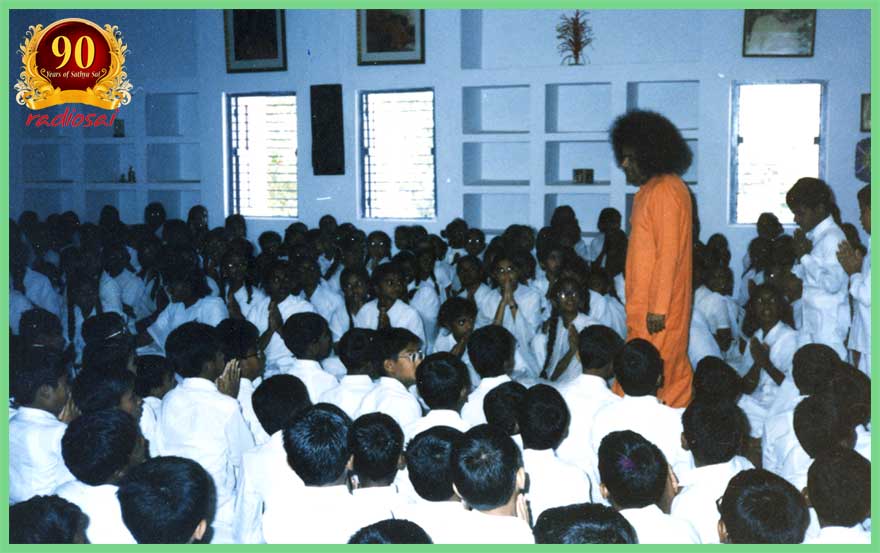 |
The next day Swami said, “Just go to school.” I was required to take a small entrance exam and Munni aunty said, “Tomorrow is a Thursday. It is a good day. So you join straight after darshan. Just stand near the Krishna statue in the mandir.” When the school students came in, I joined my line and went to the school. It was the weirdest experience – one moment I was sitting in the darshan line and the next I had joined the students and walking towards my new future.
KM: What is your earlier memory of joining school?
MD: I remember my classmate Priyam asking me if I would like to come to the prayer hall. I immediately agreed and when we entered the hall, I immediately sensed a homely feeling. It was amazing how all at once more than 1,000 Sai brothers and sisters had become a part of your life. Then of course there was the adjustment time. You need to get tuned to the food, the routine and even the way of thinking – which are all so different from conventional schools.
KM: How did that play out?
MD: I had to just go with the flow and not stick to my own idea.
KM: What was the hardest?
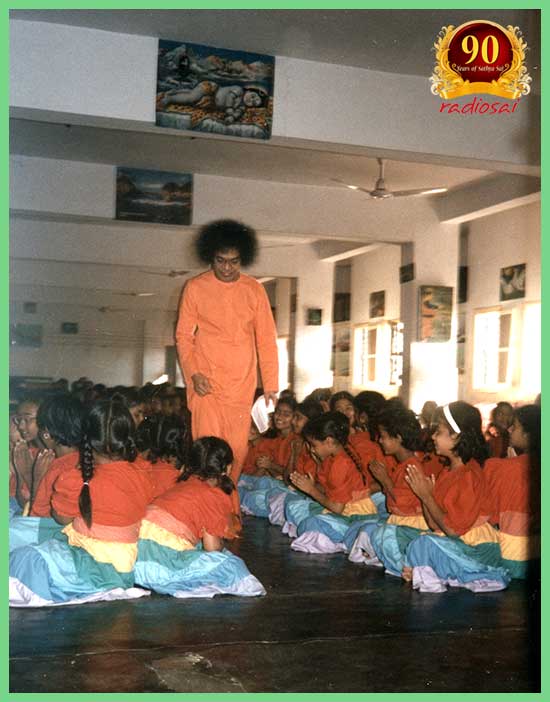 |
MD: The hardest? Well the hardest also became one of my best experiences and that was actually learning Sanskrit. It was during the X standard board exam.
KM: And you didn't know a word of the written or spoken Sanskrit. Altogether a new language!
MD: Yes. And I had to face the board exam – which as you would know is an exam taken at the national level.
KM: Yes, the question paper is set externally. Children all over India take that external exam.
MD: And you don't even get to initial your name on the response sheet, just a number. Swami taught such a beautiful lesson that God is omnipresent and works via His instruments. Shashi Ma'am was our Sanskrit teacher and knowing my predicament, she said, “You know what? Just learn one essay – ‘Paropakaraya’ and a bit of grammar.” Although she made it sound so simple, it took me nearly one year to learn even that! Sanskrit was like sticks and dots and lines for me as it would be Chinese for you!
So my pre-final examination marks were shamelessly 30. Once, I just managed to score 13 out of 100. It was a struggle. I even tried asking my classmates to read aloud the essay so I could record and listen to it and somewhat get it stuck in my head.
Just as we were approaching the board exams, Swami called us in for darshan and blessed our hall tickets, or ID cards. Our class was sitting in line for darshan and my classmate Jagriti was sitting next to me, I remember. Many of us were holding letters and pens.
When Swami walked in, He took our letters and blessed our pens. At that time I lightly rose to say, “Swami, Sanskrit!” He looked at me and said, “Very, very happy” and walked on. I sat down thinking, “Why on earth is Swami happy when I am struggling here and not able to get anywhere with my knowledge of the language?”
KM: How did you then wade through this test!
MD: It didn’t help that it was festival time then, and I could remain focused even less on my studies. I remember Munni aunty and all the teachers from the school, Shashi Madam and everyone, were very supportive. Even my family and friends from our Sai centre in Belgium said, “Come on Maya! Go through the experience.”
I remember going into the prayer hall and saying, “Swami, this is not an exam in Sanskrit. If at all it is something, it is only a test I go through with You.” So I got up early on the day of the exam, around three o' clock and went over the lessons. Usually the exams were held in the boys section. But that day, there were so many exams scheduled that we were assigned the prayer hall. I was elated that our class could sit in the prayer hall to write the exam. Before looking at the question paper, I saw Munni aunty passing by the door and giving me a thumbs-up sign!
When I looked down at the question paper, I was taken aback to see the question on ‘Paropakaraya’ - the essay that I had learnt by heart! It just showed how even a year before the exam Swami had used His instrument, the class teacher, to help me out.
I walked out of the exam hall really happy. And, like Swami had said I passed with 51% marks.
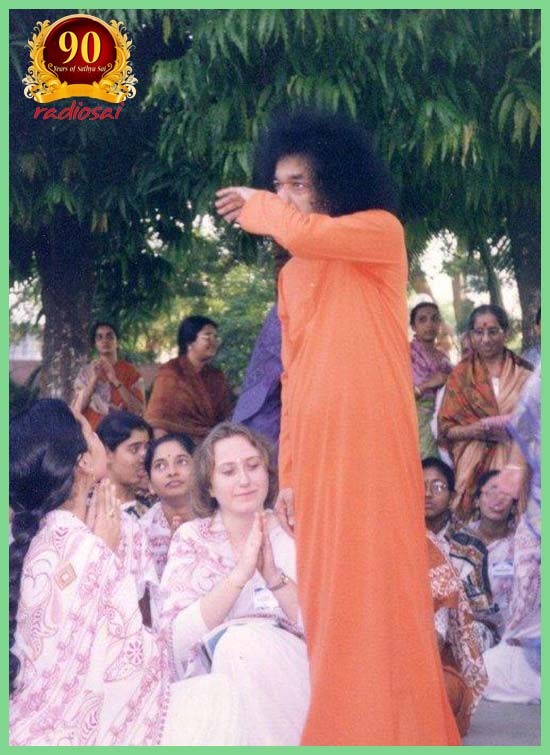 |
KM: What a relief that would have been for everyone! Imagine learning a brand-new language. It is not an easy language to learn from scratch within a year and score 51%!
MD: Later when I joined Anantapur, I was told about a student who was having a tough time with science subjects. In an interview which she had with her mother, Swami said, “Don't be like this. Come on! There was once a girl and her name was Maya and she had to write Sanskrit. Only because of her faith she passed!”
KM: What was the key takeaway for you from this experience?
MD: I treasure the experience as it reiterates the relation or the equation that each one of us share with Bhagawan. Nothing else is important. Regardless of the obstacle or challenges going on in our surroundings, there is nothing more important than our relation with Bhagawan. Our trust in Him needs to be absolute.
KM: It is a great lesson for all the students out there who are listening to this interview - we all have one subject that we might not be very good at or many of us dread. If we have faith in Swami and keep studying, in the end our effort and His grace will come together and, just as the example cited, we will all get through!
MD: Actually this was one of the happiest memories of my school years - what could be happier than getting through something like a struggle with Swami? Then there are of course other instances like our excitement when Swami would call us for darshan, special programmes or a movie and how He would send us fruits. Even during sports time Swami would send us vitamin tablets for boosting our strength.
The motherly love was immense. He would ask us, “What did you have for breakfast? Was it enough?” Swami would always be caught up in so many things – organising events, programmes, initiatives – but He would always have time to look out and care for each and every one of us. I also remember in my tenth standard Swami allotted my dad and me a room inside the ashram. He instructed Chiranjeevi Rao Sir to give an apartment on the third floor and not on the fourth floor as it would be easier for my dad to carry all the music instruments to the school – the synthesizer and all. This is another example of how Swami's love is detailed and practical. You simply cannot place it on a human scale. It is just absolute!
Imbibing Life Skills during University Years
KM: What was the Anantapur experience like?
MD: Not enough can be said about all the teachers at the school and the University. How they are there as Swami's instruments, translating His love to you via the subject being taught, via consolation or counselling – they are there for you 24 hours a day, unconditionally.
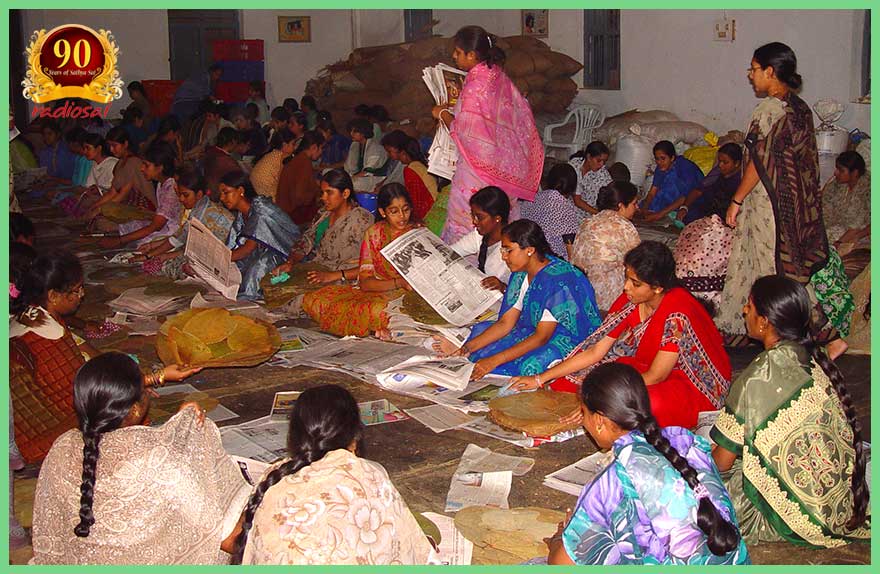 |
I gained valuable life skills and values – such as the opportunity to do Grama Seva (hands on service in the nearby villages). Just before we would leave for this annual ritual, Swami would call in the teachers and students and remind us about the attitude that we must practice while doing seva. I remember His words - “You are doing it from God to God and not from one person to another person. That becomes personal service. Remember it is seva to God in another being.” Giving us practical instructions, He would say, “Do not forget anyone. Check each household – how many people live there? Is anyone left out in the field? You are going there to give. So go with a giving attitude!” Swami would pay attention to every little detail!
 |
A special memory that I cherish is how all the teachers and students would sing bhajans late in the nights while packing parcels of food so our brothers could distribute them the next morning. There is nothing better than the enthusiasm of the youth channelled into positive activity rather than whiling away time. Through the concept of Grama Seva, Swami gives a strong sense of life purpose to every individual.
KM: Grama Seva is selfless service to villages that Swami introduced as an integral part of Sai education. Every year during Navaratri the students visit villages and see for themselves what rural India is really about and experience the joy of serving selflessly.
MD: True. When some of the people saw Swami's picture, which is given with a beautiful thought and mostly a calendar behind, they would say, “Swami really remembers me? He was here with us so many years ago and He still remembers us and sends prasadam to us.” It was so touching to see their pure joy and gratitude.
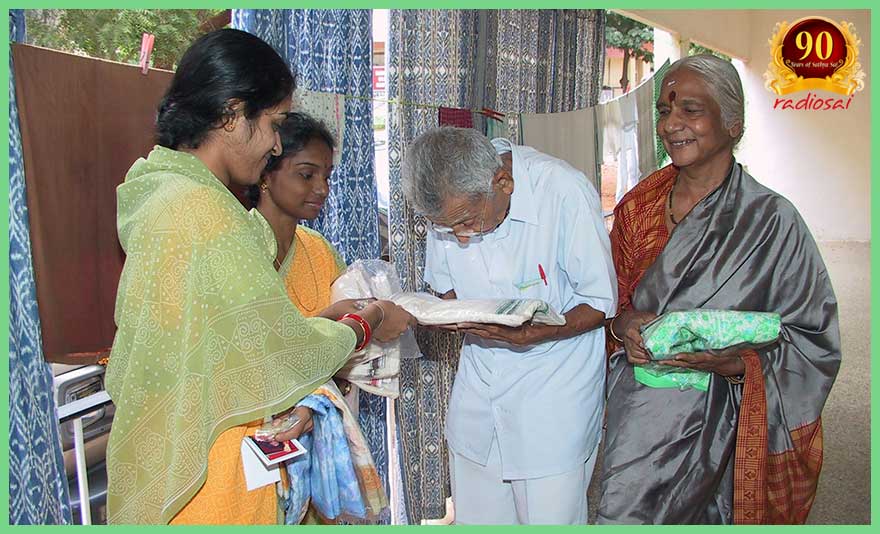 |
Moving out into the Real World
KM: Maya, you had six beautiful years at the lotus feet as a student of the Higher Secondary school and later at the Sai University. What was life like after Prasanthi Nilayam, after Anantapur? There must have been a huge adjustment curve going back to Belgium, settling in and getting on in the world outside, which can really be a world of hard knocks.
MD: Well, I believe that the hardest thing to manage in the outside world is our own ego. It is important that we tackle and deal with this ego on a daily basis!
KM: Well said, that is truly the issue everywhere – not just in the outside world but in the world within us as well.
MD: True. But, here in Parthi, you have lot of spiritual comfort. You have Sai brothers and sisters around you who are all tuned to the same wavelength. The intrinsic values of life are visible all around in Parthi. On the contrary, when you step out in the external world, you just tend to get sucked into the flow, into the rat race that everybody is caught in. Somehow, we lose clarity on the importance of life, on the larger picture. It is a different experience where ego plays a dominant role and blocks Swami's guidance. What gives me joy is the Sai Centre. Each time you get back to your home base, you feel this familiar churn in your stomach and a voice telling you, “Come on, this is where you are meant to be.”
KM: Staying focused on your main goal?
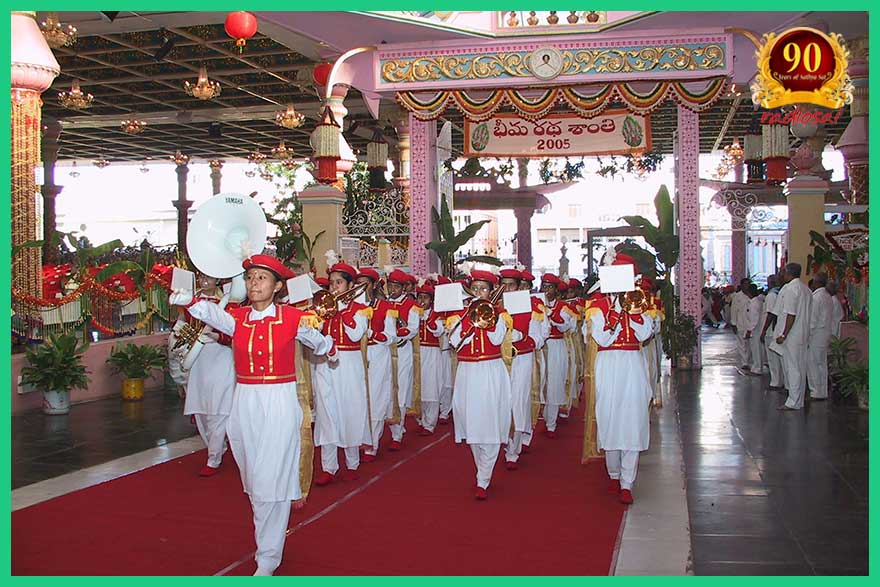 |
MD: Everyday is an ongoing battle! The philosophy “Swami is the doer” is all that you have sometimes to counteract the forces of the external world. Allow me to share an incident. There was this client who was unhappy that his goods were stuck in India because of an error that we had made in the documentation process. Knowing his problem to be genuine, I rushed to the Belgium ministry to request them to make the correction in the document.
I said, “Sir, may I please ask you to make the corrections so his goods can be cleared?” He looked at me and brushed aside the documents and said he wouldn’t be able to help. That moment I just moved away a little bit and said a small prayer, “Swami, we really wish to help this person. How do we go about this?” I also remembered my father’s words to recite the Gayatri Mantra when we left the house every day. He would say, “Gayatri Mantra helps you connect with the positive force. She gives light and welcomes the path of intuition to help you think with clarity.” So, that moment at the ministry, I also chanted the Gayatri Mantra and then went back to the person to seek his help again. This time, he was really so affable. I didn’t change my approach in any way, just asked him the same question that I had earlier. But this time, his response was surprisingly positive and he immediately took the paper from my hand and made the correction, stamped it and returned it to me!
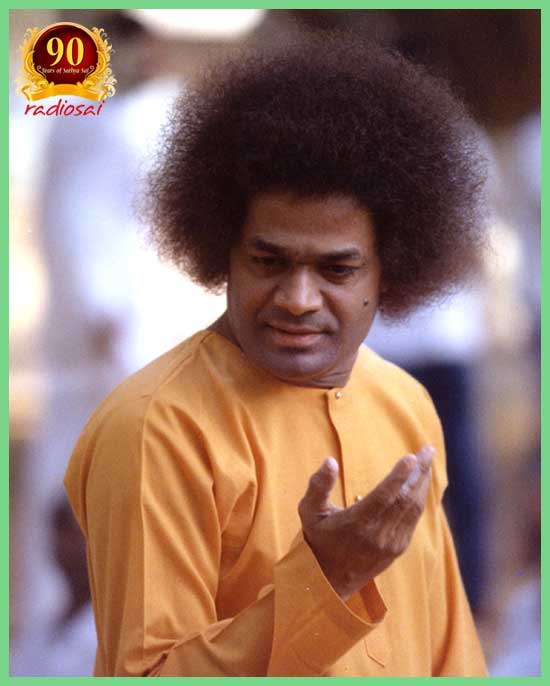 |
KM: Chanting the Gayatri Mantra made all the difference.
MD: Yes and there was not even a huge lapse of time from the first and second time that I interacted with the official. That was why the power of the mantra was so evident. It just proves that when you wish to do something, even with all good intentions, but with a sense of ego and doer-ship, you sometimes are not able to get the same success as when you invite Swami to take over. He then does the work for you. That incident was a clear illustration of this phenomenon.
KM: You work in the diamond trade. Antwerp, I think, is the biggest diamond trading place in the world. We all hear about this diamond trade being soaked in blood and you are in the thick of it! Are these blood diamonds or do these diamonds come from fair trade? What is the experience like? As a Sai student how does that play out for you?
MD: Well, we are in close connection with the Belgium Ministry and also with the industry’s central office in Belgium. We comply with every rule and ethical norm such as the use of the Kimberley certification. We also have a team of experts who put the diamonds to stringent tests. Such practices help us prevent the trading of blood diamonds to the extent possible. It is like installing a home burglary system. You can do a lot of things in your house but you can never prevent somebody from breaking in completely. However, you can delay the time and make it difficult for a burglar to enter. This is how we proactively work together on that scale. We abide by best practices and remain true to our duty.
KM: How do you personally stay on course in remaining true to your duty?
MD: Whatever we are engaged in, even in our jobs - you, me and all of our listeners - the important thing is to ask for Swami's guidance in our work. And at the right moment, He will give us the right urge and nudge to progress in the right direction. We are but His instruments and, as part of that role, aim to perform our duty to the best of our ability.
Invoking Swami’s Support as a Way of Life
KM: Maya, you actually joined this industry at an entry level position and rose very quickly. Tell us about that.
MD: Well, the main intention after my studies here in Parthi was to be able to stay as much as possible in the Indian atmosphere because that is where we were brought up. But, there was this vacant position in this company back in Belgium and I applied for it. It was my first solicitation interview and I immediately got this position. Swami's education is very sincere. It is not alienating, it is grounded. So whatever we do, we do it with an intention to please Swami and to please Swami in other beings. This learning shines through when Sai students appear for job interviews – which distinguishes us from other candidate and helps us get selected from the lot.
I also remember my dad’s words, “Don't forget. Your boss is Swami. It is not the person sitting there in your office in the corner. It is Swami in him and Swami is your boss.” With that intention, we are able to remain true to the education that we received here in Parthi and put to use the learning that we received as our moral compass.
KM: You say that your father taught you that your boss is Swami. Do you ever have a moment when you disagree very strongly with this boss of yours who is Swami? How do you handle that and resolve it? What if you have a major difference of opinion?
MD: Well, first of all somebody who is in charge of the company has the full responsibility of the company. So you cannot go against someone who bears such a responsibility. But when I am confronted with a contentious situation, I open up and say, “Sir, can you give permission to speak freely?” When I do that, I am able to get his full attention and understanding. But that’s the extent we can go. We can lay all the cards on the table by explaining our stance, then pray to Swami and leave the rest to Him.
KM: You are actually number two in the line of logistics and insurance. But you do not go socializing, your evenings or after hours are not spent at slightly more fun places, they are spent in satsang. How do your peers and other young people view you?
MD: No, not really. During work hours, I am accessible to everyone and in the eventuality of a problem people don’t hesitate to come up and speak to me. After work, everyone goes back to their families. Yes, some do stop by pubs or other places. Even I have been asked to join them a couple of times, but I never really felt the urge to go. And now my friends know that I am not really game for pub hopping! But, of course, there have been instances when I have joined them to be part of a celebration or some such occasion.
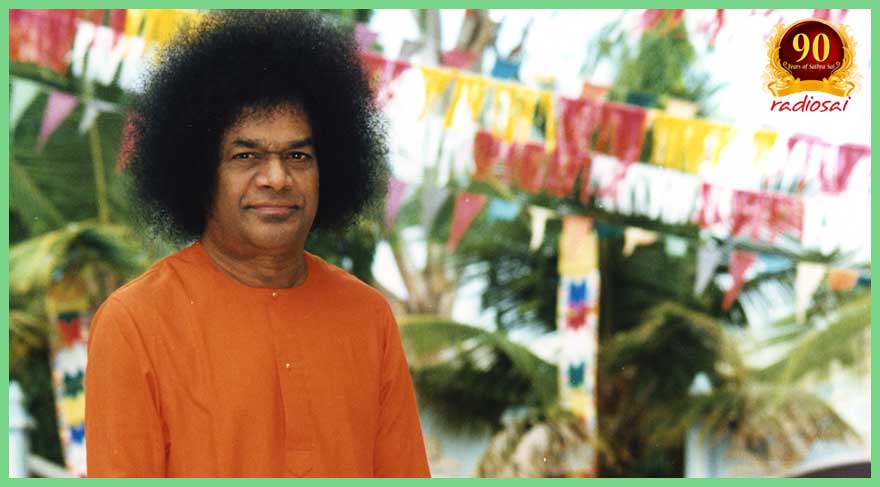 |
KM: That is very nice. You come back to Parthi every now and then. You seem so much at home here. Why? Why do you come back so often?
MD: Swami's omnipresence is felt everywhere, but the concentration and spiritual comfort that exist here in Parthi are incomparable. It is good to come again and again, back to our roots, to recharge and be a part of the positive atmosphere that is a daily experience here.
KM: Just a way of life! Isn’t it so beautiful? Final question, Maya - who is Bhagawan Sri Sathya Sai Baba to you?
MD: He is the closest, the dearest treasure and friend. Bhagawan is our God, our everything. There is nothing deeper in life than Bhagawan.
KM: What has the Maha Samadhi done for you?
MD: Maha Samadhi has actually internalized my relationship with Bhagawan even more. Earlier, we had Swami's physical form and attention all the time, but now His presence is felt so much more. It is an internalisation process for all of us. It draws us to seek and realise God within us and also to meet God through our relations with others. In a way, it has taught us to focus on the divinity in others, instead of being caught up with the flaws that we tend to perceive.
KM: Maya, you truly are a diamond in the crown of the Sai education system. Talking to you has been beautiful. Would you like to add any final thoughts?
MD: I thank everyone – the teachers, my elders, everyone here in Parthi - who works to keep Swami's home open and welcome to everyone. It’s amazing how people like Shourie aunty and Asha aunty are continuing the routine and tradition that Swami has set. It is equally wonderful that the teachers of the schools and the students who come back here to teach are proceeding and welcoming those who come here.
KM: Thank you very much Maya. Sairam!
MD: Sairam.
Radio Sai Team
What are your impressions about the Article? Please let us know by writing in to h2h@radiosai.org or you may leave your thoughts in the comments section. Do not forget to mention your name and country.
| comments powered by Disqus |







